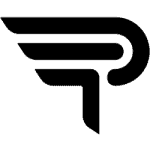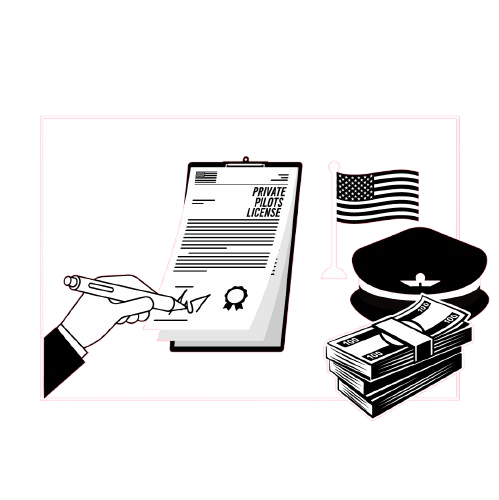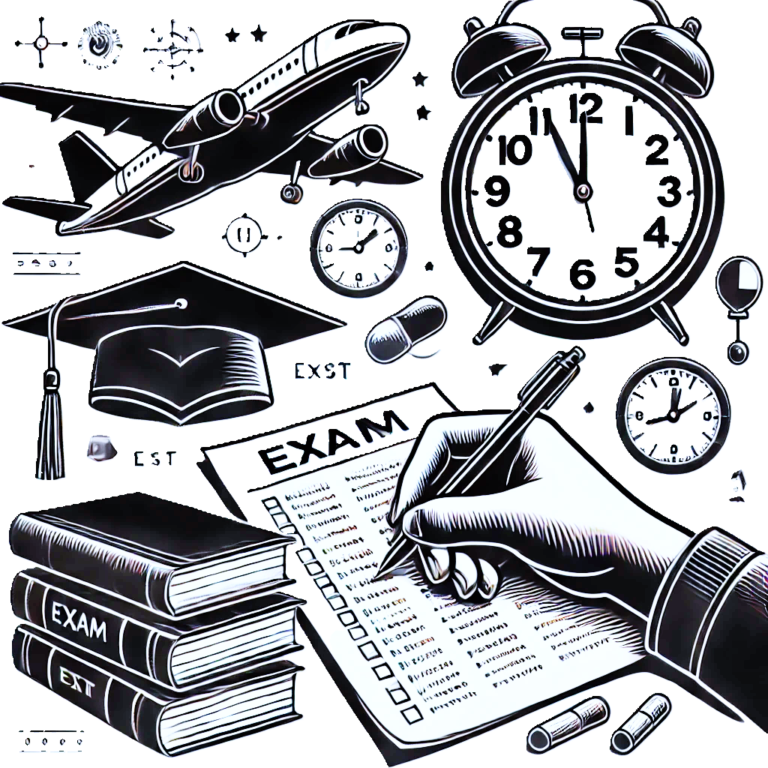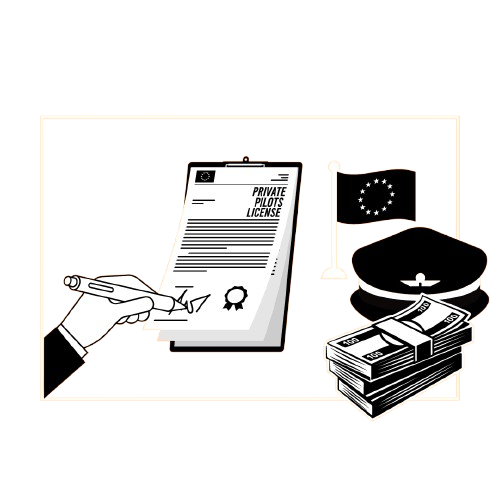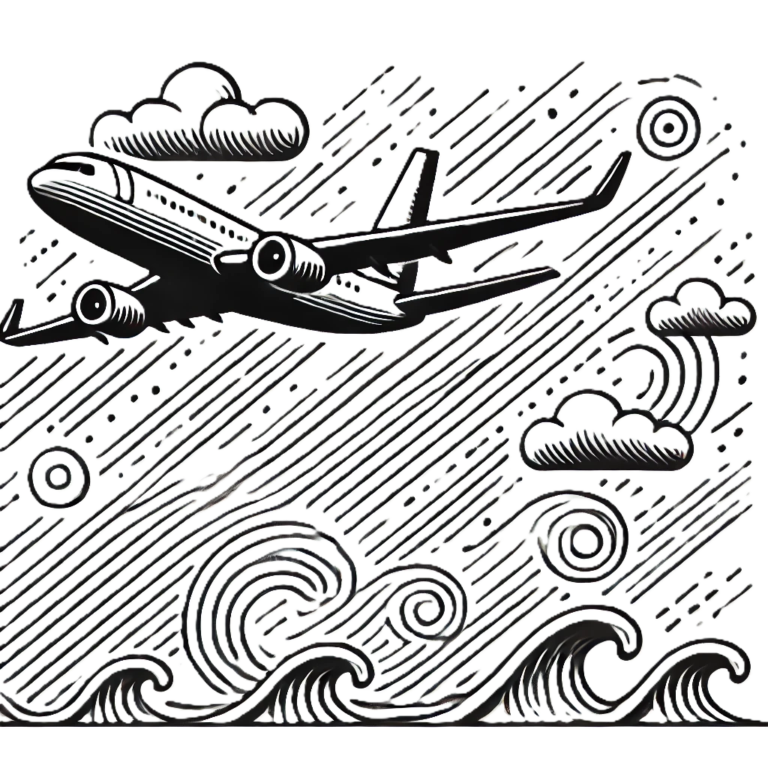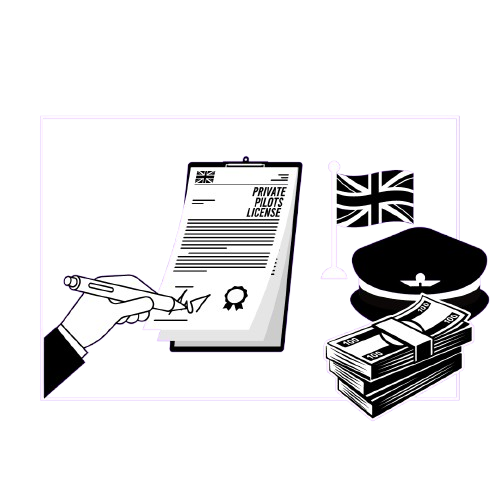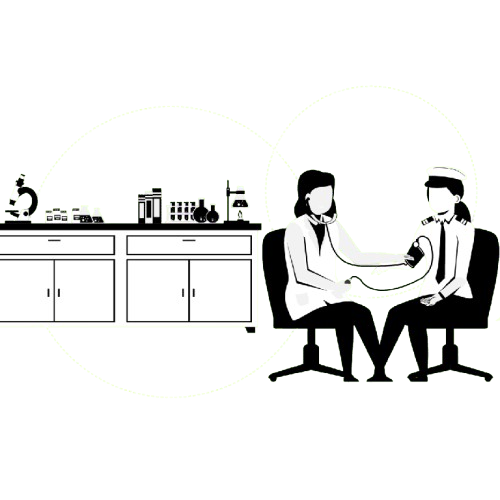Private Pilot License America – Get your ppl USA – 5 MIN READ
Have you ever thought about getting your private pilot license in the USA? (Find out how to get your PPL in the UK or in Europe in our other guides!)
This license will allow you to fly for fun, as well as fly your friends and family all around the country.
It is one of the most exciting and unique hobbies you can possibly do, and something I myself desire to do again in the future (funny thing is I am qualified to fly an Airbus jet but don’t have my PPL license!)
While the total cost of obtaining a private pilot license ranges from $10,000 to $17,000 (keep reading for a breakdown of costs) or more, it’s one of the coolest and most rewarding things you can do.
So how do you get your private pilot license? In this guide, I am going to explain exactly what you need to do.
Or, if you’re most interested in how to become an airline pilot, you can read our full guide.
Get your private pilot license today!
How To Pass Your PPL Theory Exams – Flight Prepper!
I’m incredibly excited to announce that I am now partnering with FlightPrepper.
I’m delighted to be working with them, as not only will they help you prepare for your theory exams with practice exam questions but with an extension question bank. But they provide detailed explanations, meaning you will understand the answer and the theory behind it too!
I have played with their practice exams and read through some of the theories within their question bank, and I truly believe it’s the best software on the market.
Go and check out their amazing packages and read more about the services they offer! If you’re not sure, then try before you buy and complete one of their free tests now!
Private Pilot Licence Exam Requirements
To demonstrate proficiency in the required subjects, candidates must pass written examinations with a minimum score of 75% in each subject. These exams must be completed within six sittings, with each sitting consisting of a ten-day period.
Additionally, trainees are required to complete a Radiotelephony Practical Examination, which assesses their ability to communicate effectively with ATC using standard phraseology and procedures.
This examination ensures pilots can confidently communicate and understand instructions while in-flight.
Theoretical Requirements For A Private Pilot License
How to get a private pilot license – private pilot license requirements and theoretical knowledge.
The Private Pilot Knowledge Test is a computer-based examination that consists of 60 multiple-choice questions.
To pass the test, you must achieve a score of 70% or better. The questions are drawn from the FAA’s extensive test bank, specifically focusing on airplane-related topics.
There is no official list of subjects like in the CAA and EASA written exams, but you can expect to be examined in the following topics:
Airplanes and Aerodynamics:
This topic covers the principles of flight, aircraft components, and aerodynamic forces that affect aircraft performance.
Airplane Instruments, Engines, and Systems:
You will be tested on your understanding of aircraft instruments, engine operations, and various systems within an airplane.
Airports, Air Traffic Control, and Airspace:
This section focuses on airport operations, air traffic control procedures, and different types of airspace.
Federal Aviation Regulations (FARs):
A comprehensive understanding of the Federal Aviation Regulations is necessary. Topics may include pilot certification, airspace restrictions, and operational limitations.
Airplane Performance and Weight and Balance:
Questions in this category assess your knowledge of aircraft performance parameters, weight and balance calculations, and their impact on flight operations.
Aeromedical Factors:
You will be tested on the physiological and psychological factors that affect pilot performance, including human limitations, hypoxia, and the effects of alcohol and drugs.
Aviation Weather and Weather Services:
Understanding meteorology principles, weather patterns, weather hazards, and the use of weather information sources are crucial for safe flight operations.
Navigation: Charts, Publications, and Flight Computers:
This topic covers navigation charts, aeronautical publications, and the use of flight computers for flight planning and navigation.
Navigation Systems:
Questions in this category focus on the use of navigation systems, such as GPS, VOR, and NDB, and their integration into flight planning and en-route navigation.
Cross-Country Flight Planning:
You will be evaluated on your ability to plan a cross-country flight, including route selection, airspace considerations, fuel planning, and navigation procedures.
Flight Requirements For A Private Pilot License UK
Flight Requirements:
To obtain a Private Pilot License (PPL) in the U.S., aspiring pilots must meet specific flight requirements outlined by federal regulations.
To be eligible for the practical test, candidates must have logged a minimum of 40 hours of flight time. This total flight time includes both 20 hours of flight training with an authorized instructor and 10 hours of solo flight.
Within the total flight time, aspiring pilots must fulfill specific training requirements, including:
Cross-Country Flight Training:
A minimum of 3 hours of cross-country flight training must be completed. This training focuses on planning and executing flights over long distances, emphasizing navigation, pilotage, and radio communication.
Night Flight Training:
Candidates must complete at least 3 hours of night flight training. This training includes one cross-country flight covering a total distance of over 100 nautical miles. Additionally, 10 takeoffs and 10 landings to a full stop must be conducted at an airport, with each landing involving a flight in the traffic pattern.
Instrument Flight Training:
Pilots must undergo 3 hours of flight training on control and maneuvering solely by reference to instruments. This training equips pilots with the necessary skills to fly safely in situations with limited visibility or adverse weather conditions.
Pre-Test Training:
Within the two calendar months preceding the practical test, candidates must complete 3 hours
of flight training with an authorized instructor to prepare for the test.
Solo Flight Requirements For A Private Pilot License USA
Solo Flight Requirements:
As part of the solo flight time, pilots must meet the following requirements:
a. Solo Cross-Country Time:
Candidates must complete a minimum of 5 hours of solo cross-country time.
b. Solo Cross-Country Flight:
One solo cross-country flight of 150 nautical miles total distance must be completed. This flight should include full stop landings at three different points, with one segment of the flight covering a straight-line distance of more than 50 nautical miles between takeoff and landing locations.
c. Takeoffs and Landings:
Candidates must complete three takeoffs and three landings to a full stop at an airport with an
operating control tower. Each landing should involve a flight in the traffic pattern.
Checkride (skill test):
The FAA Practical Exam, or checkride, serves as the final hurdle to obtain your PPL. It consists of two parts: an oral exam and a flight exam. Successful completion of both components is required to qualify for your PPL.
The checkride begins with an oral exam conducted by the designated FAA examiner. You should be prepared to answer questions and provide explanations, demonstrating your knowledge and decision-making abilities.
Following the oral exam, you will proceed to the flight portion of the checkride. The flight exam allows the examiner to evaluate your practical flying skills, including your ability to operate the aircraft safely and efficiently. During the flight exam, you will perform a series of maneuvers, such as takeoffs, landings, climbs, descents, turns, and
emergency procedures, both under normal and simulated emergency conditions.
Private Pilot License Cost USA
Training Costs:
The cornerstone of your private pilot journey lies in acquiring the necessary flight training. Budgeting for an average range of $8,000 to $15,000 is crucial to cover flight lessons, instructor fees, aircraft rental, and training materials
Examination Fees:
Upon completing your training, it’s time to put your knowledge and skills to the test. The examination process comprises a written exam and a practical test. The written exam typically incurs a fee of approximately $100, while the practical test, administered by a designated FAA examiner, carries a cost of around $500.
Equipment Costs:
Preparing for your flight adventures necessitates the right equipment. A critical component is a high-quality headset, which can range from $200 to $500. Additionally, investing in books,
charts, and other training materials for ground school and flight instruction is essential.
Medical Examination:
Before obtaining your private pilot license, a comprehensive medical examination conducted by an Aviation Medical Examiner (AME) is required. This evaluation ensures that you are in optimal health and fit for flight. The cost of the medical examination can vary from $100 to $400, depending on the complexity of the assessment.
Total Investment:
While the total cost of obtaining a private pilot license ranges from $10,000 to $17,000 or more, the experiences, memories, and opportunities that await you make it an investment well worth the price.
Medical Requirements For A Private Pilot License
A Class 2 Medical Certificate is required to receive a private pilot license (PPL).
The Class 2 Medical Certificate covers a 60-month period for pilots under the age of 40.
If the 60-month period takes you past the age of 40, your certificate will automatically become invalid at the age of 42.
For those between the ages of 40 and 50, the certificate is only valid for a 24-month period and will automatically become invalid when a pilot reaches the age of 51.
For pilots over the age of 50, this certificate is only valid for 12 months.
The full list of Class 2 medical requirements for pilots can be found here, and you can book an appointment with an AME here.
